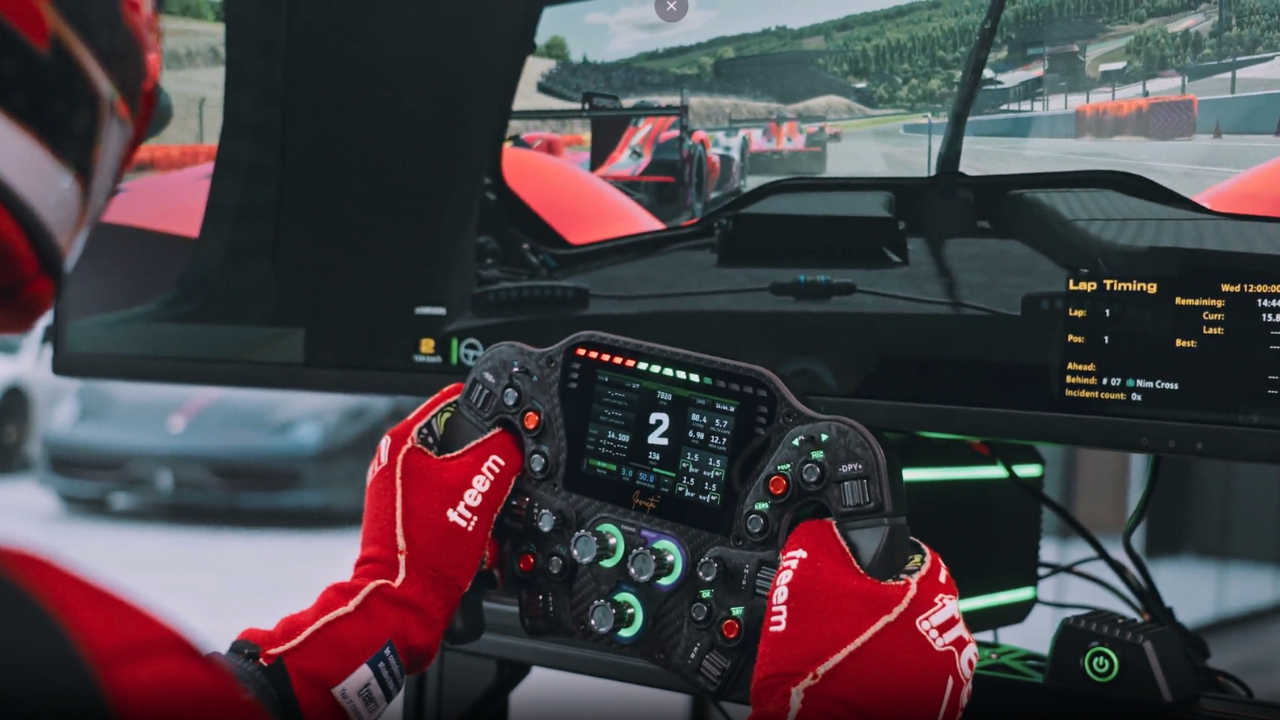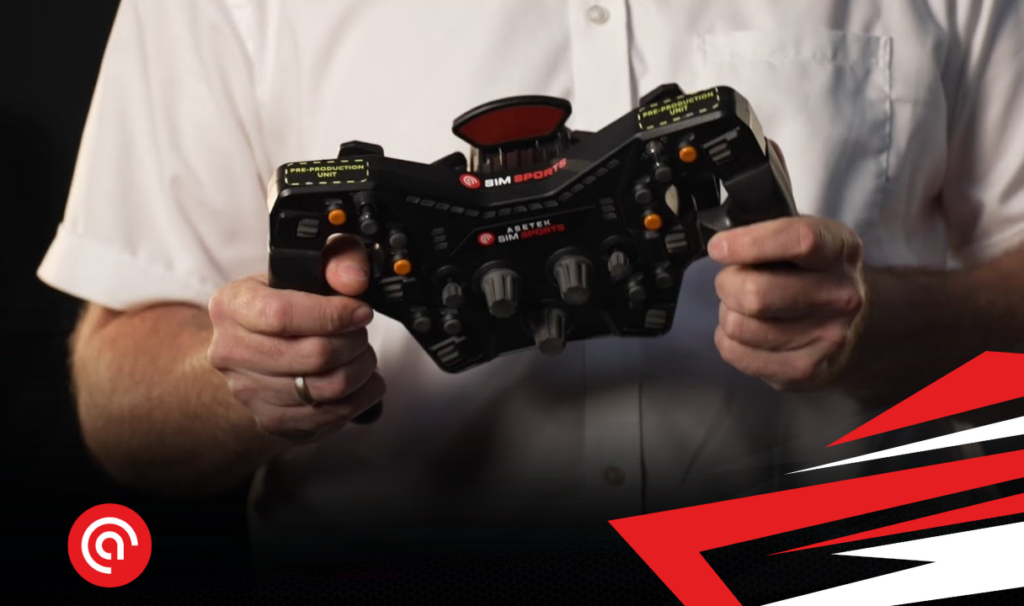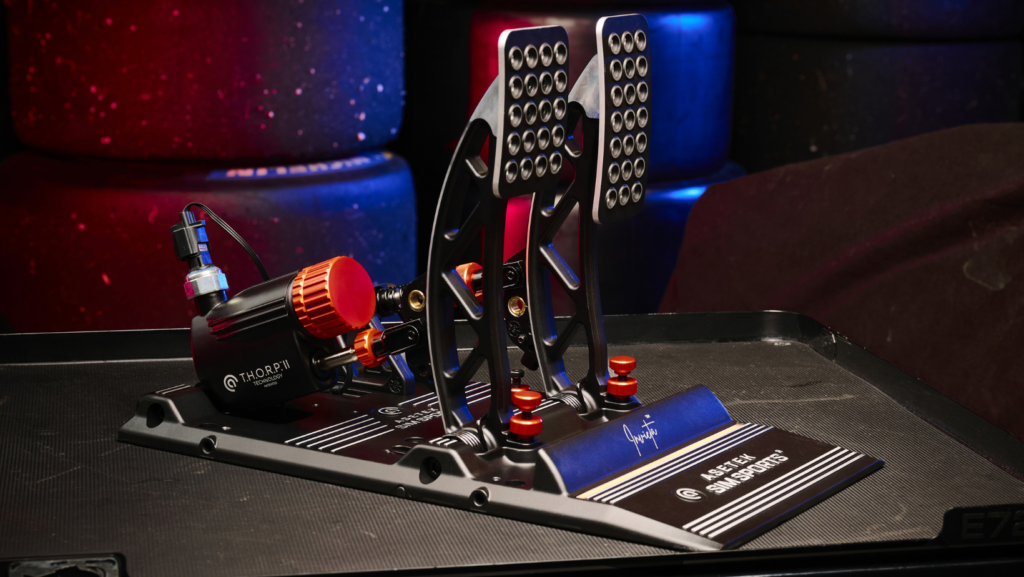
Sim Racing Ergonomics: The Complete Guide to Comfort, Control & Performance
In the world of sim racing, precision and control are paramount. As sim racers, we spend countless hours perfecting lap times, fine-tuning our gear, and immersing ourselves in competitive racing environments. Yet, amidst the thrill of racing for hours, many overlook a crucial component that directly impacts both performance and comfort: sim racing ergonomics.
This guide will walk you through how to optimize your sim rig ergonomics, covering everything from seat setup to monitor placement and lighting.
Whether you’re a beginner or seasoned racer, dialing in your ergonomic setup can make a big difference.
What is Sim Racing Ergonomics and Why Is It Important?
Sim racing ergonomics is the practice of setting up your rig to match your body’s natural posture and movements. It ensures a seamless connection between you and your equipment, helping to reduce fatigue, increase comfort, and enhance performance over longer sessions. A well-designed ergonomic setup also minimizes the risk of strain or injury.
Physical Benefits of Proper Sim Racing Ergonomics
By aligning your sim setup to fit your body, you reduce unnecessary pressure on joints, muscles, and tendons. Over time, poor posture can lead to repetitive strain injuries or chronic discomfort. An ergonomic rig helps you maintain a healthy spine position, ensures proper blood circulation, and decreases the chances of developing wrist, shoulder, or lower back pain.
Performance Advantages
Comfort means control. When you’re not distracted by discomfort or fatigue, your reaction times improve, and your concentration lasts longer. This is particularly crucial in endurance events or competitive online leagues, where mental focus and physical stamina are key to consistency and lap time improvements.
Real-World Example: Formula 1 Drivers and Ergonomics
In professional motorsport, the importance of ergonomics is taken to the extreme. Formula 1 drivers, for example, have their seats custom-molded to fit their exact body shape. These carbon fiber shells are built to provide optimal support and ensure the driver maintains perfect posture even under extreme G-forces and long race distances.
Every element of an F1 cockpit is tailored – from the steering wheel’s shape and button layout to the pedal positioning – all designed to minimize fatigue and maximize control. This level of ergonomic precision is a core reason why drivers can maintain peak performance during every race.
In short, good ergonomics isn’t just about feeling better – it’s about driving better. Investing the time to optimize your setup gives you an edge on track and helps you race longer, smarter, and safer.
How to Optimize Your Sim Racing Setup for Maximum Comfort
Optimizing ergonomics is crucial for you looking to enhance your performance and comfort during sim racing.
The sections below will provide valuable tips on optimizing your sim racing setup, including choosing the right seat and seating position, wheels, and pedals, considering lighting conditions, and optimizing monitor placement.
By following these recommendations, you can create a more immersive and ergonomic sim racing experience – and potentially become a better racer.
Ergonomic Seat Setup for Sim Racing
1. Start with a Stable Base
Make sure your seat and rig are securely mounted to eliminate unwanted movement during races. A stable foundation ensures consistency under braking, maintains your posture throughout a session, and prevents distracting shifts that can reduce immersion and performance.
2. Adjust Seat Height for Proper Viewing
Your eyes should align with the center or upper third of your monitor. This helps reduce neck strain and keeps your focus in the right zone. Proper seat height also ensures that your field of view aligns naturally with the racing line, helping you anticipate corners more effectively and maintain a stable driving posture.
3. Find the Ideal Seat Distance
Position the seat so you can comfortably view the full display without turning your head too much. This supports good posture and peripheral awareness.
Your knees should remain slightly bent with your feet flat on the pedals, allowing for smooth transitions between throttle and brake. Maintaining the right seat distance also ensures consistent input accuracy and reduces unnecessary strain on your shoulders and neck during longer sessions.
4. Customize the Seat Angle
Some racers prefer a more reclined angle for endurance; others go for upright for better visibility. Try different angles to see what suits your racing style. A well-chosen seat angle helps support the natural curve of your spine, improves leg positioning, and ensures you’re not putting unnecessary pressure on your lower back or hips.
5. Add Lumbar Support
A lumbar cushion or built-in support helps maintain a natural spine alignment, reducing back strain. Supporting the lower back encourages better posture, prevents slouching, and ensures your spine stays in a healthy, neutral position throughout your session. Over time, this reduces the risk of lower back fatigue and long-term discomfort, especially during endurance races or extended practice sessions.
6. Use Padding for Longer Sessions
High-density foam inserts or seat pads can relieve pressure points during multi-hour stints. The right padding helps distribute body weight evenly, reducing discomfort in pressure-sensitive areas like hips and thighs. It also improves blood circulation, allowing you to stay focused and physically comfortable throughout extended races or endurance events.
Optimizing Wheel Position in Your Sim Rig
1. Set the Correct Wheel Height and Distance
Your elbows should stay slightly bent, and your hands should rest naturally on the wheel. Adjust height and distance to avoid shoulder tension or wrist fatigue. The wheel should sit close enough that you can maintain full rotation without locking your arms or leaning forward, preserving a natural range of motion.
2. Achieve Better Stability for Control
Secure your wheelbase firmly to your rig. Stability enhances precision, especially under heavy force feedback loads. Loose or flexing mounts can distort force feedback, reduce responsiveness, and ultimately affect your driving consistency.
3. Align Wheel with Driving Position
Make sure the wheel is centered relative to your seat and pedals. Misalignment can lead to overcompensation during turns and result in muscle strain over time. A well-aligned wheel helps ensure consistent input from both arms, especially in technical corners.
4. Consider Rotation Angle and Adjustability
Set your wheel’s degrees of rotation based on the car type you’re simulating – 270°–540° for formula cars, up to 900°–1080° for GT or road cars. Use software to adjust resistance, damping, and force feedback to suit your preferred feel and driving style.
How to Optimize Pedal Placement for Comfort and Efficiency
1. Position for Natural Foot Alignment
Place the pedals at a distance that matches your leg length. Knees should be slightly bent, and your feet should rest comfortably on the pedals without overstretching. Proper alignment supports smoother transitions between pedals and reduces strain on your ankles and knees.
2. Add Foot Support for Stability
Use a textured base plate or heel rest to improve foot grip and minimize slippage. A solid base helps maintain consistent pedal pressure and prevents unwanted movement that can compromise your driving accuracy.
3. Adjust Pedal Angle to Match Driving Style
The tilt of your pedals can significantly impact comfort and control. A slight upward angle helps replicate real-world driving positions and makes different braking styles more immersive.
4. Ensure Even Pressure Distribution
Make sure each pedal has consistent resistance and spacing for your foot size. Uneven tension or awkward spacing can lead to fatigue or inconsistent braking and acceleration performance.
Monitor Placement for Sim Racing Ergonomics
Proper sim racing monitor placement is essential for immersion and comfort. Let’s break it down so you can get the best possible view from your cockpit:
1. Adjust Your Monitor to Eye Level
The screen center should sit at your eye level in racing position. This minimizes neck tilt and supports a neutral posture. Proper alignment also reduces eye movement and strain, helping you stay visually focused during races.
2. Maintain an Optimal Viewing Distance
Your monitor should be roughly one arm’s length away. This prevents eye strain and keeps your focus tight. The ideal sim racing distance to monitor is often around 60 – 70 cm, depending on screen size. Maintaining this distance ensures your field of view remains immersive without causing fatigue.
3. Tilt the Monitor for Visibility
Slightly angle the screen upward to follow your natural line of sight. This ensures you see everything clearly, especially during fast-paced moments. Proper tilt alignment also helps reduce reflections and maintains visual consistency across your entire screen.
4. Sim Racing Triple Monitor Tips (Optional)
If you use a triple monitor setup, align side monitors at a ~60° angle to mimic a realistic field of view. Consistency in height and curvature improves visual immersion. Ensure bezels are aligned and your monitors are set to the same color temperature and brightness for a the best viewing experience.
Creating the Right Lighting Conditions for Sim Racing
Lighting is often one of the most overlooked aspects of sim racing ergonomics, yet it plays a significant role in both visual comfort and overall immersion.
A well-lit environment can reduce eye fatigue, sharpen focus, and elevate the realism of your sim rig experience.
1. Use Ambient Lighting
Moderate, diffused lighting reduces eye fatigue and keeps your environment immersive. Aim for soft, indirect light sources that spread evenly across the room, avoiding harsh shadows or overly bright spots that can break immersion.
2. Avoid Glare
Keep direct light sources like windows or overhead bulbs out of your screen’s path. Use blinds or soft LED lights to control brightness. Glare can not only reduce visibility but also force you into uncomfortable viewing angles that strain your neck and eyes.
3. Task Lighting
Task lighting should highlight essential areas without overwhelming the space, allowing you to easily locate controls without straining your eyes.
4. Adjustable Options
Choose dimmable lights with customizable color temperature to match day or night racing. Cooler tones may help with alertness during intense sessions, while warmer tones can be more relaxing during long races or late-night practice.
Summary: Why Sim Racing Ergonomics Matter
Getting your sim rig ergonomics right is more than just comfort — it’s a performance advantage. From your seat position to the right lightning, every adjustment plays a role in how effectively you can control the car, stay focused, and enjoy the experience behind the wheel.
If you’re serious about sim racing, don’t overlook your ergonomics. Take time to optimize your setup using the tips above – and you’ll not only feel better but driver better, too,
Frequently Asked Questions (FAQ)
Q: What is the best monitor height for sim racing?
A: The center of your monitor should be at eye level to prevent neck strain and ensure comfortable, natural viewing.
Q: How far should I sit from my sim racing monitor?
A: A good rule is about an arm’s length away, or approximately 60–70 cm, depending on screen size and FOV settings.
Q: What angle should my sim racing screen be?
A: A slight upward tilt helps align the screen with your line of sight. In triple setups, a ~60° inward angle on side monitors improves immersion.
Q: Why does sim racing ergonomics matter?
A: Proper ergonomics reduces fatigue, improves precision, and prevents strain during long racing sessions.
Q: Should pedals be flat or angled in a sim rig?
A: It depends on preference, but many racers opt for a slight angle to mimic real-world cars and improve comfort.
Q: How do I know if my sim rig setup is ergonomic?
A: You should feel relaxed, with minimal strain in your back, neck, and arms. If you feel discomfort during or after racing, adjustments are likely needed.













 Back to top
Back to top